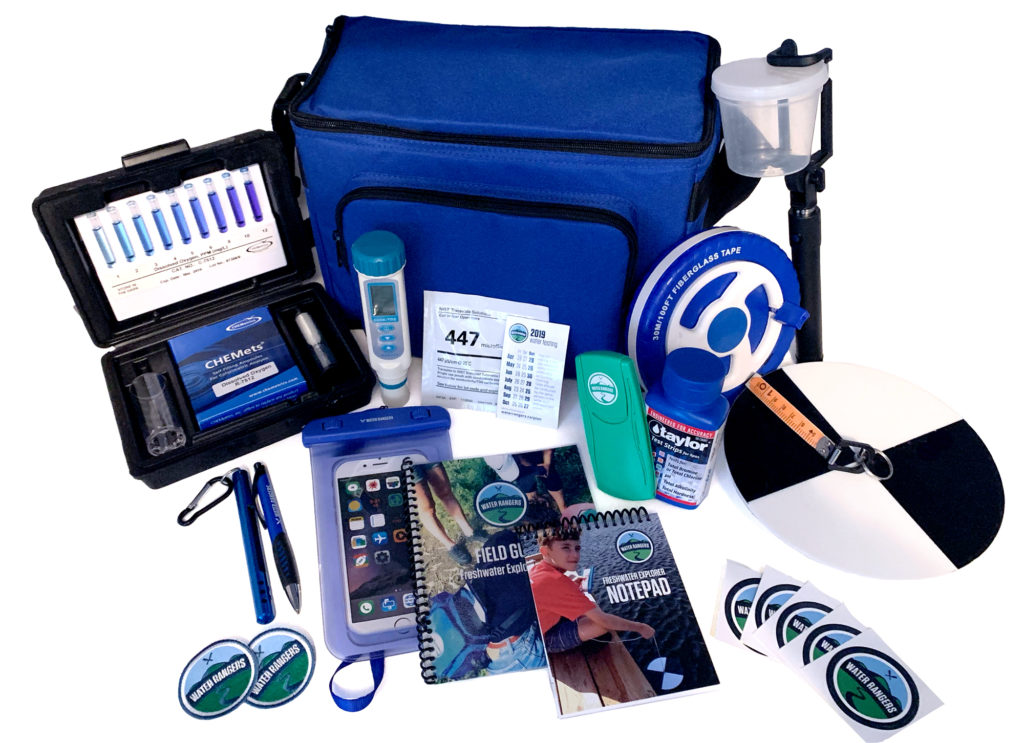Testing with Water Rangers
Why testkits? We’ve developed these easy-to-understand testkits so that citizens can get involved in monitoring waterbodies. As you revisit sites, you understand ecological change, share results, and intervene on emerging issues. According to our survey results, those who test water increase their awareness of the natural world, multiply their time outside, and renew their commitment for protection.

Why these parameters? The parameters in our kits represent typical parameters that can be detected with inexpensive equipment, and based on our research with experts on what would be useful. We test each device to make sure it gives meaningful and accurate results, and we work with scientists to compare results to professional equipment. Check out our comparison research. If you would like us to test equipment, please get in touch. While we accept donated equipment to test, we are not sponsored by any company, and continue to remain impartial so that we can present you with unbiased information.
What about drinking water? These testkits can’t predict if water is safe to drink, and should be used to determine general health parameters for waterbodies. Drinking water requires testing for heavy metals and e.coli, which are difficult to test for in the field with inexpensive tools. However, we are always looking for new parameters that fit our criteria, and so if you know of tests that are easy-to-use (safe), affordable, and give results right away, please tell us!
But what about [x] parameter? Usually we would LOVE to include your parameter too, but so far we have been unable to find tests that meet our criteria (affordable, easy-to-use, accurate). Our top ‘asks’ are for:
- Phosphates (phosphorous): We are currently testing high level phosphates, but have yet to find tests that work to the sensitivity required for regular testing (where readings can be between 2 and 10 ppb for phosphorous. These field tests don’t have that kind of accuracy… yet! Also, many of the field tests also require you to handle reagents that can be toxic, and that makes disposal difficult, meaning they wouldn’t be safe for kids to use. We are watching this space closely, and working with partners to see if this can change.
- E. coli: While we have seen some tests for drinking water that give you a ‘absence/presence’, they are bulky and expensive, and often single use. They also don’t give us a numerical value, making them irrelevant for natural water systems (where a count of 200 would still be safe for swimming). Absence presence would give too many false alarms.
- Nitrates/Nitrites: Again, it’s another one where the tests we’ve tried aren’t sensitive enough unless you’re in a pollution event. Probes we’ve seen don’t seem very sensitive, and experts we’ve worked with aren’t sure how accurate they are.
- Heavy metals: Since toxicity can often happen at low concentrations, and field tests often require a hazardous reagent we haven’t found a test we love yet. However, if you know of any, please let us know! We have participants that could benefit from your research.
- Toxic algae: We are hopeful that affordable, accurate field tests emerge. We haven’t yet tested these, so if you have research that shows their accuracy, please let us know!
- Emerging contaminants: Again, concentrations can be so low that tools like mass-spectrometers are required to detect them.
With all these tests that we’d like to include, we’re always interested in collaborators and scientists that can help us fill this gap.
How can I collect data and who owns it? We are a free open data platform, which means anyone can record data. The data itself is downloadable so long as you are logged in, and can be downloaded per location. Group administrators also have tools to download all their data in their admin panel.
Helpful links
Have more questions? Please get in touch.
